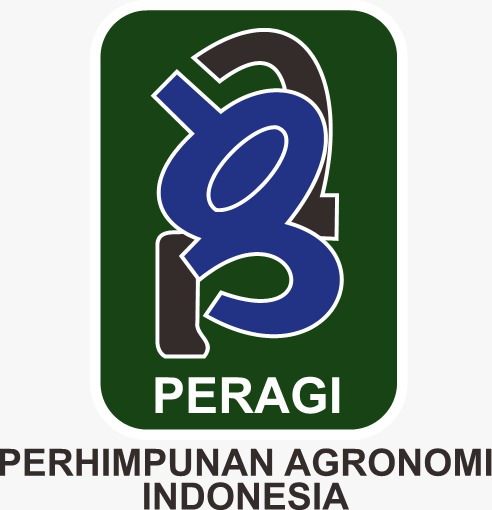Intensity Of Soil Treatment And Frequency Of Inorganic Fertilizer Application On Nutrient Levels And Growth Of Palm Oil (Elaeis guineensis Jacq) At The Replanting Stage
Abstract
Oil palm is a plantation crop that produces vegetable oil, and people highly need it, so it requires efforts to increase its production. One way is by utilizing existing land without having to open new oil palm plantation areas with replanting. This study aimed to analyze the effect of fertilization frequency on different tillage and to get the best fertilization frequency on different tillage on leaf nutrient levels and growth of oil palm plants. This research experimented with a split-plot design (SPD) with a randomized block basic design. The factors tested in this study consisted of the main plot, e.g., tillage (No tillage, 1 time of tillage, 2 times of tillage) and subplots, e.g., the fertilization frequency (D1: 5 times frequency of NPK fertilization D2: 4 times frequency of NPK fertilization D3 : 3 times frequency of NPK fertilization). The two factors were combined, and 12 treatment combinations were obtained. Each treatment combination consisted of 3 groups, totaling 36 experimental units. Each experimental unit consisted of 2 plants, so 72 plants were obtained. The data obtained were analyzed using variance and further tested with the honest significant difference test (BNJ) at the 5% level and advanced test analysis using the Satker application (SAS). This study showed that NPK fertilization with a frequency of 2 times in 2 times tillage increased vegetative plant growth (increased stem circumference). The main plot of tillage two times increased leaf nutrient content (leaf N content) and plant vegetative (plant height gain and stem circumference increase). NPK fertilization with a frequency of 2 times increased plant growth (increased stem circumference).
Downloads
References
Adam, H., M. Collin, F. Richaud, T. Beule, D. Cros, A. Omore, L. Nodichao, B. Nouy, J.W. Tregear. 2011. Environmental regulation of sex determination in oil palm: current knowledge and insights from other species. Ann. Bot. 108:1529-1537.
Badan Pusat Statistik Indonesia. 2020. Luas lahan replanting. Badan Pusat Statistik Indonesia. Jakarta.
Darmosarkoro,W., I.Y. Harahap, dan E. Syamsudin. 2003. Kultur teknis pada tanaman kelapa sawit pada kondisi kekeringan dan upaya penanggulangannya. 228-243.
Foong, SF and Syed, S. 1993. Frequency of CIRP application in oil palm. In: Jalani, B.S., Ariffin, D., Rajanaidu, N., Dolmat, M.T., Paranjothy, K., Mohd Basri, W., Henson, I.E. and Chang, K.C. (eds.) International Palm Oil Congress. Update and Vision. Kuala Lumpur, 20–25 September 1993. PORIM, pp.345–350.
Goh, J. K., dan R. Hardter. 2010. General Oil Palm Nutrition. International Potash Institute Kassel. Germany.
Goh, K.J., Tee, BH, and AR Anuar. 2000. Applicability of precision farming for oil palm plantations in Malaysia. In: Seminar on Precision Farming. UPM and Agricultural Institute of Malaysia. Serdang.
Goh, K.J., Tee, BH, and AR Anuar. 2000. Applicability of precision farming for oil palm plantations in Malaysia. In: Seminar of Precision Farming. UPM and Agricultural Institute of Malaysia. Serdang.
Gunawan, B. 2014. Mekanisasi Pertanian. Jaudar Press. Surabaya.
Listia, E., I. Pradiko, M. Syarovy, F. Hidayat, E. N. Ginting, dan R. Farrasati. 2019. Pengaruh ketinggian tempat terhadap performa fisiologis tanaman kelapa sawit (Elaeis guineensis Jacq.).Jurnal Tanah dan Iklim. 43(1): 33-42
Pahan, I. 2013. Panduan Lengkap Kelapa Sawit. Jakarta (ID): Penebar Swadaya.
Pahan, I. 2013. Panduan Lengkap Kelapa Sawit. Jakarta (ID): Penebar Swadaya.
Prihmantoro, H. 2000. Memupuk Tanaman Buah. Penebar Swadaya. Jakarta
Sanhueza, E., L. Cardenas, L. Donoso, M. Santana. 1994. Effect of plowing on CO2, CO, CH4, N2O, and no fluxes from tropical savannah soils. Journal Of Geophysical Research. 99(8) :16429-16434.
Schwendener, C. M., J. Lehmann, and P. B. de Camargo. 2005. Nitrogen transfer between high and low quality leaves on a nutrient-poor Oxisols determined by 15 N Enrichment. Soil Biology and Biochemistry. 37:787 -794.
Sukmawan. Y., Sudradjat. Sugianta. (2015). Peranan pupuk organik dan npk majemuk terhadap pertumbuhan kelapa sawit tbm 1 di lahan marginal. J. Agron. Indonesia. 43 (3) : 242 – 249.
Susila, W.R. 2006. Peluang Pengembangan Kelapa Sawit di Indonesia: Perspektif Jangka Panjang 2025. SOCA: Jurnal Sosial Ekonomi Pertanian. 6 (3).
Syahputra, M.A, dan Wardati. 2015. Pemberian pupuk majemuk NPK dan Cu untuk pertumbuhan tanaman kelapa sawit belum menghasilkan (Elaeis guineensis Jacq) di lahan gambut. Jom Faperta. 2(1):1-11.
Yudistina, V., m. Santoso, dan N. Aini. 2013. Hubungan antara diameter batang dengan umur tanaman terhadap pertumbuhan dan hasil tanaman kelapa sawit. Buana Sains. 17(1): 43-48.
Copyright (c) 2023 Hendra Pangondian Sihaan, Wawan Wawan, M. Amrul Khoiri

This work is licensed under a Creative Commons Attribution 4.0 International License.
Authors who publish with Jurnal Agronomi Tanaman Tropika (JUATIKA) agree to the following terms:
Authors retain copyright and grant the Jurnal Agronomi Tanaman Tropika (JUATIKA) right of first publication with the work simultaneously licensed under a Creative Commons Attribution License (CC BY 4.0) that allows others to share (copy and redistribute the material in any medium or format) and adapt (remix, transform, and build upon the material for any purpose, even commercially) with an acknowledgment of the work's authorship and initial publication in Jurnal Agronomi Tanaman Tropika (JUATIKA).
Authors are able to enter into separate, additional contractual arrangements for the non-exclusive distribution of the journal's published version of the work (e.g., post it to an institutional repository or publish it in a book), with an acknowledgment of its initial publication in Jurnal Agronomi Tanaman Tropika (JUATIKA). Authors are permitted and encouraged to post their work online (e.g., in institutional repositories or on their website) prior to and during the submission process, as it can lead to productive exchanges, as well as earlier and greater citation of published work.







 More Information
More Information



